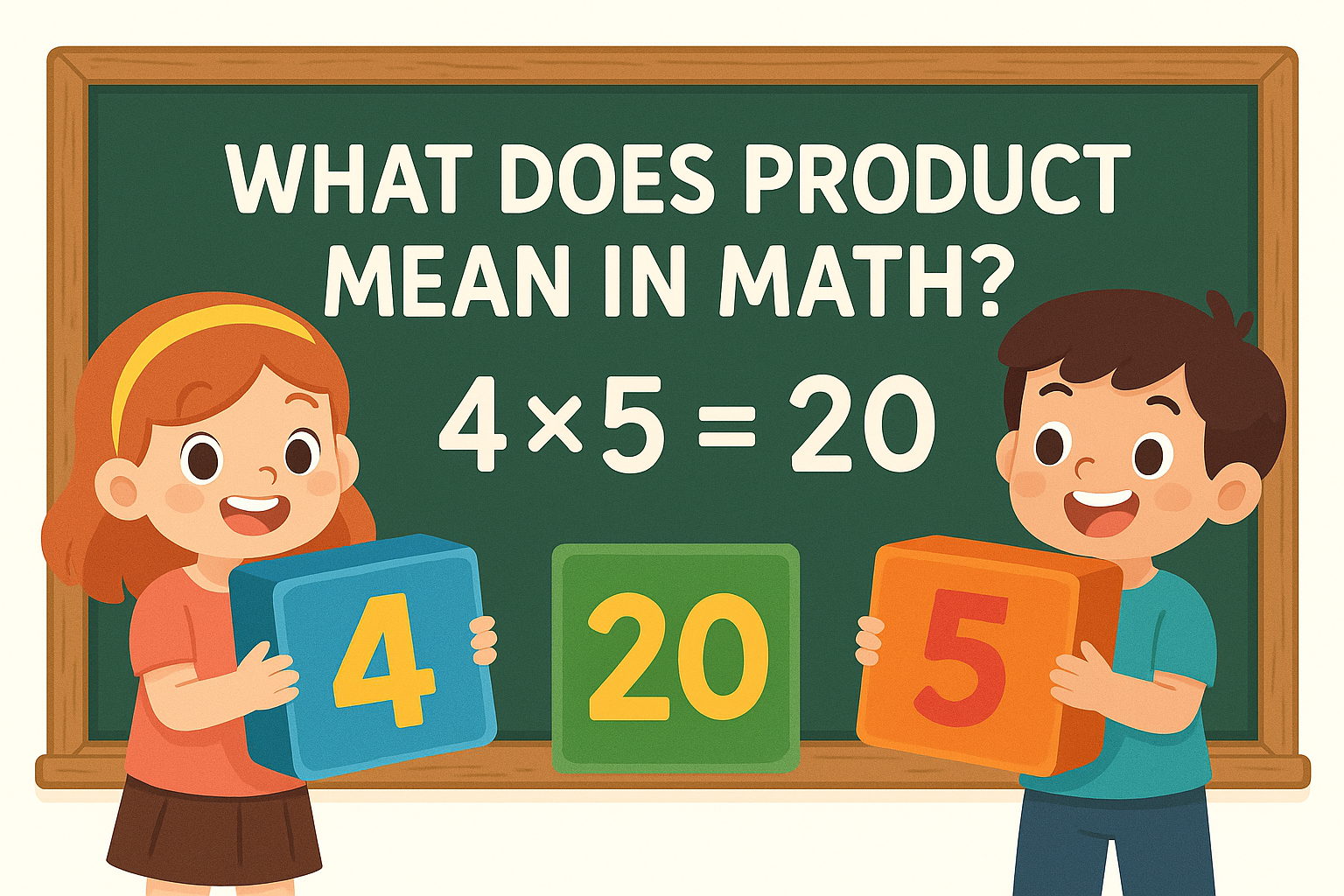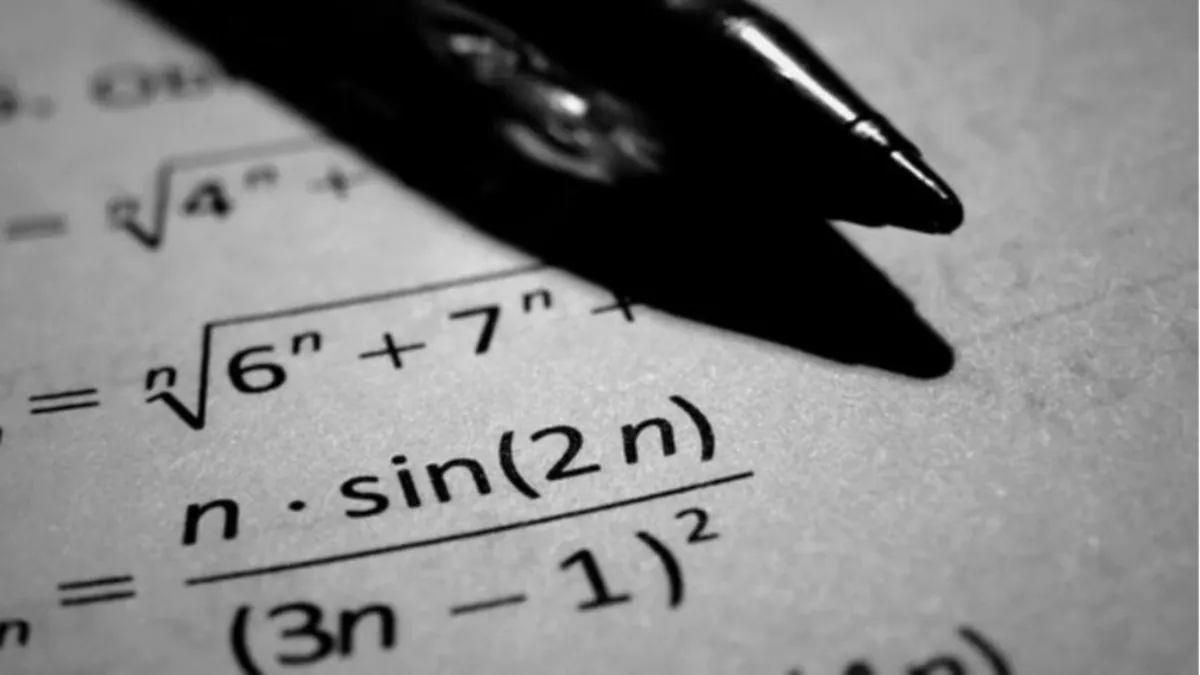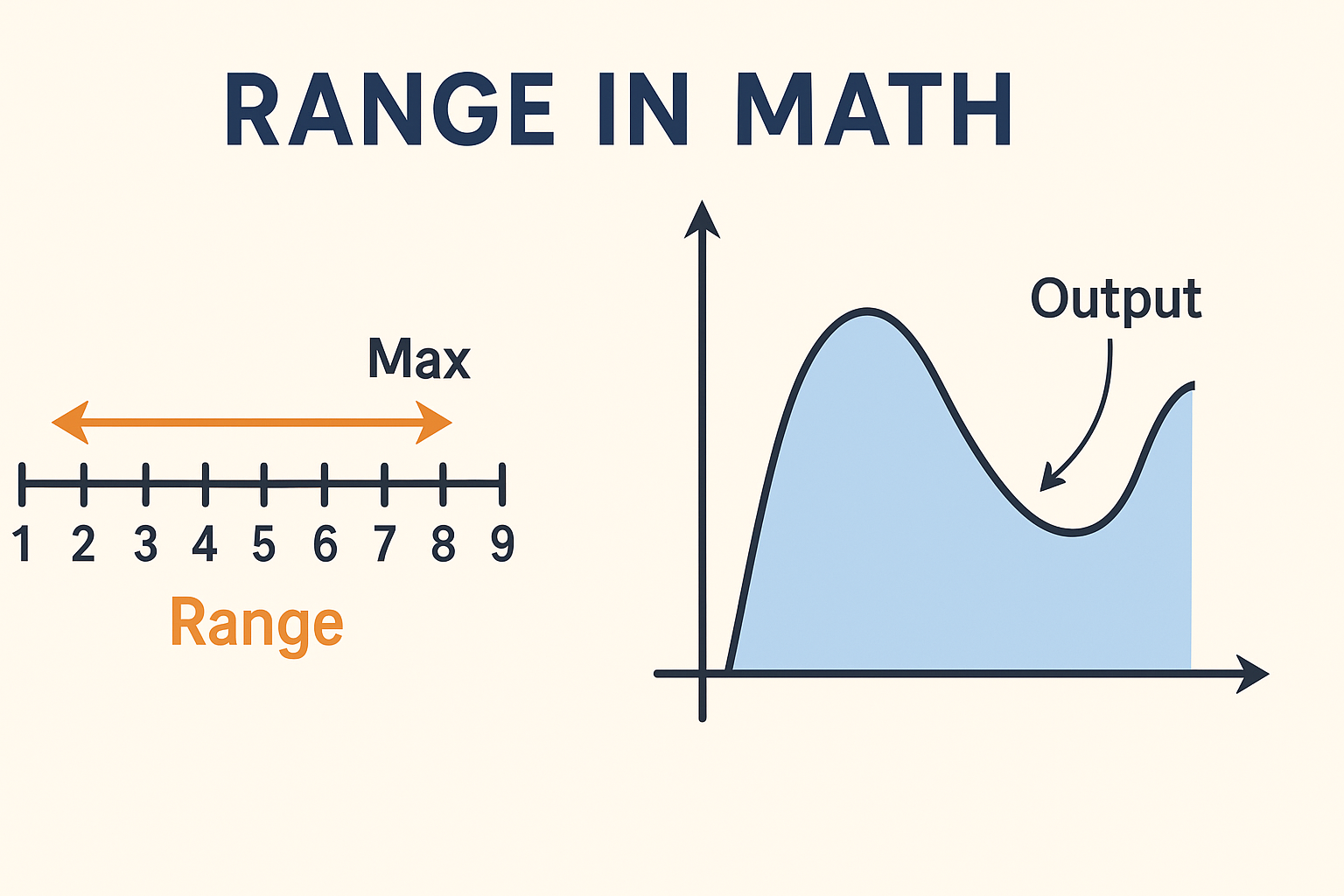
What Does Product Mean in Math?
Quick Answer:
In mathematics, a product is simply the result you get when you multiply two or more numbers (or expressions) together. It answers the question, “If I take this many groups of that size, how many in total?”
Key points & added value
- Basic definition: The product of factors aaa and bbb is written a×b(or ababab), and tells you how many items you’d have if you made aaa groups of bbb.
- Commutative property: a×b=b×a. The order of multiplication doesn’t change the product.
- Associative property: (a×b)×c=a×(b×c). You can group factors any way you like.
- Zero property: Any number multiplied by 0 is 0: a×0=0.
- Extends beyond whole numbers: Works for fractions, decimals, negatives, and variables.
Concrete examples
- Whole numbers:
- Fractions & decimals:
- Variables & expressions:
Why “product” matters
- Builds foundations for division (division “undoes” multiplication) and algebra (factoring & simplification).
- Real-world uses:
Pro-Tip for Students
When you’re stuck:
Skip-count out loud: e.g., for 4×6, count “6, 12, 18, 24.”
Draw an array (rows & columns) to visualize groups.
What Is a Product?
The product is the answer you get when you multiply two or more numbers, expressions or variables. It tells you how many items you have when you form equal groups of a given size.
Why Multiplication Matters
Multiplication speeds up repeated addition by letting you combine equal groups at once instead of adding one group at a time. It lays the groundwork for division (undoing multiplication), helps you work with fractions (scaling parts of a whole) and underpins algebraic concepts like factoring and working with variables.
Also Visit: What is range in math?
How to Find the Product
Step-by-Step Guide
- Identify the factors: Write down the numbers (or expressions) you want to multiply. Example: 2 and 3
- Multiply the factors: Use the × symbol (or write them side by side) to multiply. Example: 2 × 3 = 6
- Verify by repeated addition: Add one factor to itself as many times as the other factor indicates. Example: 2 + 2 + 2 = 6
- Confirm your result: Make sure both methods give the same total. If they match, that’s your product.

Examples of Products
What Is the Product of 2 and 5?
- Calculation: 2 × 5 = 10
- Sub-question: How many fingers in 2 hands? (2 × 5 fingers = 10)
What Is the Product of 3 and 4?
- Calculation: 3 × 4 = 12
- Pull-out tip: Think of it as 3 rows of 4 donuts.
What Is the Product of 15 and 2?
- Calculation: 15 × 2 = 30
Common Questions
- What is a product of 2 & 3? → 6
- How to find the product of a number? → multiply it by another factor
Real-World Uses of Product
- Area of a Rectangle: length × width = area
- Recipe Scaling: cups × servings = total cups needed
- Finance: price × quantity = total cost
- Data Point: Students using visual multiplication tools improve speed by 40%.
FAQ: Your Product Questions Answered
- What does product mean in math? The result of multiplying two or more numbers.
- What is the product of 3 and 4 in maths? 12 (think “3 groups of 4”).
- What is a product of 15 and 2? 30.
- How to find the product of a number? Multiply it by another factor (use “×” sign).
- Why is product different from sum? Sum adds; product multiplies (repeat-add faster).
- Can you have more than two factors? Yes: 2 × 3 × 4 = 24.
- Is 0 × any number always 0? Yes—zero property of multiplication.
- How does product relate to area? Area = length × width (product gives total square units).
- What’s the commutative property? a × b = b × a (order doesn’t matter).
- What’s the associative property? (a × b) × c = a × (b × c).


